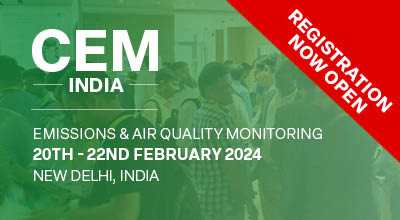| Abstract Title: | Mercury Monitoring by Sorbent Trap Monitoring Systems – A cost efficient alternative to Hg-CEMs, even in the range of 1 µg/Nm3 |
| Session Choice: | Monitoring Techniques: Trace species |
| Presenter Name: | Mr Juergen Reinmann |
| Company/Organisation: | Environnement S.A Deutschland |
| Country: | Germany |
Abstract Information :
Large Combustion Plants as e.g. coal and lignite fired power plants and cement kilns are worldwide one of the biggest mercury sources with emissions of more than 1.000 tons per year. Also in India the stationary combustion (all fuels) is by far the largest sector for mercury emissions amounting to almost 140 tons per year, whereby coal is the main source of energy in India.
As more and more countries sign the Minamata Convention, there is an increasing request to reduce the mercury emissions of such plants. In the US several rules are already in force e.g. for Portland Cement Plants and coal fired power plants. The different rules have high demands on mercury emission control and continuous emission monitoring, including very low emission limit values (ELV's) of approx. 1.5 µg/Nm3. In the European Union (EU) the revision of the BREF-document (Best Available Technology Reference document) for Large Combustion Plants is almost finished. The final document will be published in 2017. In the conclusions of the final draft is requested for e.g. coal fired power plants (with > 300 MWth) a continuous monitoring of the mercury emissions, with so called Annual Emission Levels (AEL's) of 1 - 4 µg/Nm3
In the US and also in the coming European regulations the continuous emission monitoring can be realized by Hg-CEMs or continuous sampling systems as Sorbent Trap Monitoring Systems (STMS). In the US the used sampling method is described in Performance Specification 12 B (PS 12B) and in Europe it will be published in 2017 a standard as CEN/TS, which describes the method and the minimum requirements for the quality control.
The experiences in the US, for the accurate measurement of such low concentrations, showed that it is a very complex and expensive task to do it with Hg-CEMs. Therefore many operators decided to monitor the Hg emissions with STMS. Also the standardization group in Europe considered the sorbent trap method as a good and easy to operate alternative to Hg-CEMs. By the proposal of this new working item to the European commission, one argument for the standardization of this method was the experience, that the sorbent trap system is very simple to use, as it has been demonstrated during UNEP Coal Partnership studies in Russia and South Africa. This means, that also specific for countries like India, the sorbent trap method could be a good alternative for the continuous emission monitoring of Hg emissions from large combustion plants.
This paper will give an overview of the coming CEN/TS. It will describe the method, the minimum and quality control requirements to assure reliable results. The paper will also show examples of flue gas conditions under which the sampling method was modified to realize a possible sampling. Why and in which way such modifications can have influences on the measurement results are discussed in this paper. Additional it will show examples of realized applications on different industrial sites with the AMESA M STMS, including the description of the challenges, which needed to be solved to realize successful monitoring.



